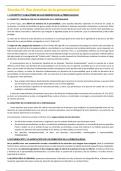Samenvatting
Statistics summary
- Instelling
- Tilburg University (UVT)
This is a summary of all the material covered in "Introduction to statistics" and "MTO-B". This bundle includes all the topics, worked out and examples of each test done. I passed Introduction to statistics with a 10. Every test has a nice overview within a table, so you can easily study the theor...
[Meer zien]














